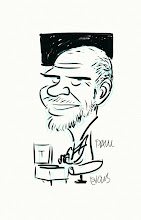More than a project!
An explanation
http://www.thirteen.org/edonline/concept2class/inquiry/index.html
http://www.youthlearn.org/learning/approach/inquiry.asp
http://wblrd.sk.ca/~bestpractice/inquiry/index.html
Using the internet to practice inquiry learning
http://www.biopoint.com/inquiry/ibr.html
Gwen Gawith
http://infolit.unitecnology.ac.nz/readings/defs.html
http://infolit.unitecnology.ac.nz/readings/inquiry.html
Inquiry learning models
http://www.discover.tased.edu.au/sose/inquimod.htm
Thursday, July 27, 2006
Digital Stories
Must read - Jason Ohler is the leading authority on this subject
http://www.jasonohler.com/storytelling/
How to give simple stories deep meaning and incredible power.
Digital stories in the language arts classrom
http://cs2.cust.educ.ubc.ca/csed/400/csed_readings/display%2024.pdf
Digital story in an e-portfolio
http://electronicportfolios.org/digistory/Movies/Legacy.mov
Some very useful digital story sites
http://tech-head.com/dstory.htm
E-Tale - http://etale.org/main
http://pmphotos.blogspot.com/2007/01/digital-storytelling-in-classroom.html
Rubric for assessing an (e)-portfolio
http://seuss.wcs.sad40.k12.me.us/ep/rubric.htm
Rubric for assessing a digital story
https://www8.georgetown.edu/centers/cndls/applications/posterTool/data/users/AssmtRubrics_DS3.doc
Creating on-line portfolios http://www.electricteacher.com/onlineportfolio/
Examples
https://www8.georgetown.edu/centers/cndls/applications/posterTool/index.cfm?fuseaction=poster.display&posterID=178
http://www.jasonohler.com/storytelling/
How to give simple stories deep meaning and incredible power.
Digital stories in the language arts classrom
http://cs2.cust.educ.ubc.ca/csed/400/csed_readings/display%2024.pdf
Digital story in an e-portfolio
http://electronicportfolios.org/digistory/Movies/Legacy.mov
Some very useful digital story sites
http://tech-head.com/dstory.htm
E-Tale - http://etale.org/main
http://pmphotos.blogspot.com/2007/01/digital-storytelling-in-classroom.html
Rubric for assessing an (e)-portfolio
http://seuss.wcs.sad40.k12.me.us/ep/rubric.htm
Rubric for assessing a digital story
https://www8.georgetown.edu/centers/cndls/applications/posterTool/data/users/AssmtRubrics_DS3.doc
Creating on-line portfolios http://www.electricteacher.com/onlineportfolio/
Examples
https://www8.georgetown.edu/centers/cndls/applications/posterTool/index.cfm?fuseaction=poster.display&posterID=178
Curriculum stocktake
The result of the curriculum stocktake will be announced on Monday 31 July. It will be interesting to learn how much of the curriculum will be mandated and how. Some of us are hopeful that schools will have considerable flexibility to define the curriculum for their community and that not too much will be directed by the government. That way school leadership will come to have meaning.
Final
The Minister of Education has released a “Draft for consultation” document on the New Zealand School Curriculum. This will be open for submissions until 30 November. During 2007 submissions will be considered and in 2008 a new curriculum will be mandated. The draft affirms the position we have taken with the way we have developed our school programmes:these documents will set the direction for learning for all students … and will ensure … they are equipped for lifelong learning and for living in a world where continual change is the norm (p7).While the National Administration Guidelines set out mandated requirements and we should continue to meet those as best we can, it will be responsible of us to start moving towards the ideas outlined in the draft statement.Key elements are:The vision, principles, and values collectively guide and underpin curriculum decision-making. The key competencies are important generic capabilities needed by all young people, and the learning areas provide a structure and suggest contexts in which these competencies can be developed, using appropriate pedagogy. (p7).This statement allows schools some flexibility in how schools implement the curriculum. A key change has been the shift in emphasis to ‘key competencies’ with traditional content areas to be used as ‘contexts’. Some advice is provided for schools designing their curriculum.Each school will design and implement its own curriculum in ways that will engage and motivate its particular students. Schools have considerable freedom in deciding exactly how to do this (p26-33).When planning, we are asked to consider:· Focus on outcomes· Development of the key competencies· Purposeful assessment· Coherent pathwaysThe achievement objectives for each learning area, while reduced in volume from earlier documents, still represent a major challenge. However, the way in which we are developing the curriculum will allow us to accommodate most, if not all of these, especially when spread over a two year plan.The Ministry of Education will likely provide discussion forums for people to take part in. I will be promoting discussion amongst our staff and we will continue to move in the direction we are going taking care to ensure we incorporate into our planning, the advice contained in the draft document.The government is keen for communities to participate in discussions about the document and to provide them with feedback.
Final
The Minister of Education has released a “Draft for consultation” document on the New Zealand School Curriculum. This will be open for submissions until 30 November. During 2007 submissions will be considered and in 2008 a new curriculum will be mandated. The draft affirms the position we have taken with the way we have developed our school programmes:these documents will set the direction for learning for all students … and will ensure … they are equipped for lifelong learning and for living in a world where continual change is the norm (p7).While the National Administration Guidelines set out mandated requirements and we should continue to meet those as best we can, it will be responsible of us to start moving towards the ideas outlined in the draft statement.Key elements are:The vision, principles, and values collectively guide and underpin curriculum decision-making. The key competencies are important generic capabilities needed by all young people, and the learning areas provide a structure and suggest contexts in which these competencies can be developed, using appropriate pedagogy. (p7).This statement allows schools some flexibility in how schools implement the curriculum. A key change has been the shift in emphasis to ‘key competencies’ with traditional content areas to be used as ‘contexts’. Some advice is provided for schools designing their curriculum.Each school will design and implement its own curriculum in ways that will engage and motivate its particular students. Schools have considerable freedom in deciding exactly how to do this (p26-33).When planning, we are asked to consider:· Focus on outcomes· Development of the key competencies· Purposeful assessment· Coherent pathwaysThe achievement objectives for each learning area, while reduced in volume from earlier documents, still represent a major challenge. However, the way in which we are developing the curriculum will allow us to accommodate most, if not all of these, especially when spread over a two year plan.The Ministry of Education will likely provide discussion forums for people to take part in. I will be promoting discussion amongst our staff and we will continue to move in the direction we are going taking care to ensure we incorporate into our planning, the advice contained in the draft document.The government is keen for communities to participate in discussions about the document and to provide them with feedback.
Subscribe to:
Posts (Atom)
